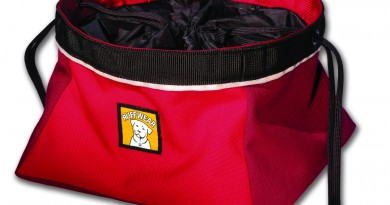Muscles Not Motors March 2011
Fischer S-Bound 98 and 112
When the first Fischer S-Bound skis came out many years ago, Fischer became one of the early pioneers of a new category of wider, lightweight backcountry skis that featured significant sidecut in their profiles for more natural downhill turns. No, they weren’t as efficient on packed snow as the beloved E99s, which excel when traveling from point A to point B over rolling terrain in more or less a straight line, but when pointed downhill, the S-Bounds turned easier and were a lot more fun. The early S-Bounds had a lot of good things going for them and a few not so good things, one of which was the lack of good uphill grip due to the combination of a full metal edge and a negative waxless pattern. Over the years, Fischer has made a lot of tweaks to improve uphill grip, but they’ve continued to use a negative pattern, and consequently never quite matched the solid grip of a molded, positive wax pattern. Finally, Fischer has developed two new S-Bounds, the aptly named S-Bound 98 (98-69-88 sidecut) and the S-Bound 112 (112-78-95 sidecut) that feature a positive wax pattern called the Offtrack Pattern which is inserted into the ski’s midsection. This process of inserting the pattern allows the base of the glide zones to remain sintered, which means the skis can be hot waxed for optimum glide because the material is porous. Another exciting improvement to the new S-Bounds, and an industry first for backcountry skis, is the use of rocker technology. Unlike traditional cambers, the tips of the skis actually rise upward when pressured, resulting in smoother turns with greater stability and downhill control. If all these new technologies sound like fangdangled, whizbang, gobblygook to you don’t worry, the E99 is still in production. S-Bound 98: $349.95, S-Bound 112: $395 www.fischerskis.com
Marquette Backcountry Skis
If you’ve spent years and years searching for the perfect tool for out-the-backdoor wintertime exploration, your search may have come to an end, right here in the middle of this gear column. Take a deep breath and check out the Marquette backcountry skis. “Skis” is a bit of a misnomer as they are more like 70 percent skis and 30 percent snowshoes. Made of bombproof molded polypropylene and manufactured in Michigan, they are wide and short and provide excellent stability and flotation in deep snow, but unlike snowshoes, they glide. The scale pattern on the bottom gives grip on the hills—not snowshoe crampon grip, mind you, but better grip than the waxless pattern on your backcountry skis—making them ideal for cruising through rolling terrain. The threaded brass inserts allow for any 75 mm backcountry binding to be mounted and when paired up with a good 75 mm backcountry boot, you’ll have all the control you need to bust out some sweet turns when you point them downhill. $179. www.marquette-backcountry.com
Camelbak Powderbak Vest
Whether you’re cruising around on your Fischer S-Bounds or your Marquettes, or doing any active wintertime activity for that matter, it is important to stay hydrated. The only problem is that water likes to freeze when it’s cold. Camelbak has tackled this issue of wintertime hydration with the innovative Powderbak. Designed to be worn as a midlayer, it is a lightweight and breathable vest with an integrated reservoir pouch that encapsulates a 72-ounce bladder. Chafe-free compression fabric conforms to the body as well as stabilizes and supports the weight of the water. Your own body core temperature keeps the water in the liquid form while you’re out playing in the crisp winter air, and an insulated pad provides additional comfort for your human back. $100. www.camelbak.com

